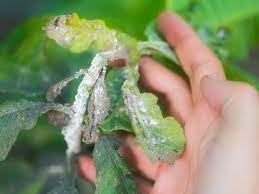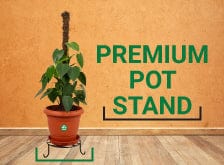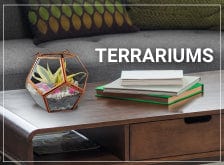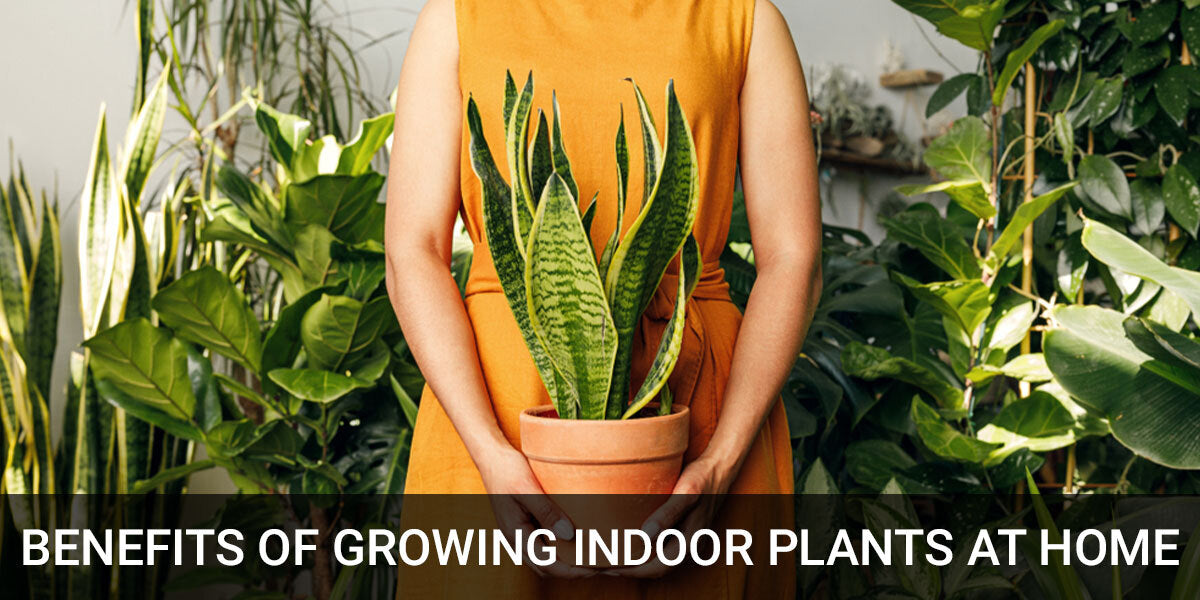How to Grow
Benefits of Growing Indoor Plants at Home
In today’s world, there is no such person, who doesn’t feel stress in his day-to-day life. Every one of us is facing several stress factors. The office itself is very stressful, where we spend most of our time hitting targets, completing tasks, meeting deadlines. Isn’t it necessary to find a solution to overcome this stress or at least to reduce it? So to overcome it what do we do generally, the simplest thing which we do is that we isolate ourselves to any soothing environments like lawns, parks in search of some peace and fresh air. But we can’t stay outdoors all the time right? Then what may be the solution for it?
Actually growing plants indoors can bring a required solution for this. Surprised? Let me explain this. Whether it may be our home or office, we spend most of our time indoors. We can’t stay outdoors all the time to lower our stress daily. However, we can create such refreshing ambiance just by having few plants inside (our home or office). If you are curious to dive deep into the pool of indoor plants. I highly suggest you know and realize some of the nifty reasons why you should maintain plants indoors.
Reasons to grow indoor plants at home/workplace/apartments:
- They can act as aromatherapy to our body in relieving stress
- They help in improving the overall performance at work when placed in offices
- They maintain the right balance of oxygen levels in your body
- They can maintain the balance of carbon dioxide and oxygen levels in places where there are no trees
- They can remove the pollutants and toxins from the air
- Their long trailing stems add beauty to our home
- We can decorate any place of our choice as they have colorful foliage and flowers.
So these are some of the great reasons to grow plants indoors. Let’s see them in detail.
1. Aromatherapy:
Usually, plants carry many different scents, these smells can act as aromatherapy to our body that helps in relieving our day-to-day stress.
-
The smell of flowers such as jasmine and lavender has been proven to relieve stress and in turn produce calmness and relaxation in us
image source
- You can easily grow these plants near a bright south-facing window.
Having a piece of greenery in your office is the simplest solution to reduce your stress levels in your daily life. Actually, these plants not only look good but also make us feel good.
2. Indoor plants increase the performance of the work:

In a research study, it is found that Indoor plants can improve concentration, productivity, and well-being by 47% and can also boost memory up to 20% when they are kept in offices. Let me explain to you how. Plants have attractive colors and these colors affect neurological pathway in our brain and each color affect our body and brain in different ways.
- The green color helps in improving concentration,
- Orange- acts as a mood lifter, and
- Blue- increases productivity (performance).
So plants with these flowers/foliage might help you in different ways at your workplace.
3. Indoor plants maintain the oxygen and carbon dioxide levels around us:

Besides having refreshing aromas and different colors, indoor plants also help in maintaining the right balance between oxygen and CO2 around us. These levels mainly affect the functioning of our brain. We feel hard to concentrate and couldn't make the right decisions when CO2 levels are high around us.

We can see this type of situation in busy workplaces like hospitals, banks, or any other government buildings, as many people will be breathing under the same roof. However, oxygen released by indoor plants helps in balancing the CO2 levels in our bodies. This is the main reason why we feel so refreshing outdoors (at parks/lawns). But having plants indoors can give you such refreshing ambiance right at your place.
By knowing all these precious benefits, world’s most successful companies started incorporating indoor plants, vertical gardening into their office designs for the well-being of employees and of course to create a refreshing and welcoming working environment for them.
4. Indoor plants play a major role in places where there are no trees:
In the apartments, we can notice many indoor plants at receptions, lift areas, and also in closed areas like corridors, and staircases. We think that they are placed to give a good look, but the actual reason is, generally apartments are constructed across large areas where we hardly find any trees. In order to maintain the oxygen levels in those areas, they place indoor plants because they can perform well even in indirect and low light conditions.
Areca palm, Hawaii ti plant, Aglaonema, Croton, Fiddle leaf fig, Cast iron plant, are some of the widely grown indoor plants in the apartments.
5. Indoor plants role in removing toxins and pollutants from the air (air-purifying):
Many indoor plants clear the harmful chemicals (benzene, formaldehyde, xylene, toluene, etc) that are very harmful both to us and to our environment. Other than CO2 they also help in reducing the concentrations of harmful gas like carbon monoxide.

Aloe vera, Areca palm, Aglaonema, Zz plant, Snake plant, Peace lily, Broad lady palm are some of the air purifying plants that play a major role in reducing indoor air pollutions.
6. Indoor plants can also grow in low light conditions:
Unlike normal plants, some indoor plants can also grow in absolutely low light conditions. We can grow them even in our bedrooms because they don’t need much light for their growth and development.

Rubber plant, Spider plant, ZZ plant, Fiddle leaf fig, Money plant, Philodendron, Snake plant are some of the plants that you can grow in your bedrooms even if the rooms are not receiving any indirect sunlight (like a room has no window).
7. The creeping nature of indoor plants can add beauty to our home:
We can grow the creeping plants in two fashions i,e. Climbing and hanging. They look so stunning in either way. The main attraction of these plants is just their green leaves which differ in size, shape, and patterns. They also differ in arrangements of leaves on their trailing stems. One must grow these plants to have an amazing experience of indoor gardening and of course to stay unique from others

Money plants, English ivy, Philodendron, Chain of hearts, String of pearls, String of bananas, Sedum burrito (donkey’s tail), are some of the examples of climbing and falling plants.
Growing trailing succulents like String of pearls/Donkey’s tail will definitely make you stand so unique among other people. So don’t miss out, growing these plants in your balconies/homes(near to window) where it gets direct sunlight for at least 5 hours (not harsh noon light).
8. We can use indoor plants in home decoring:
Now it’s time to talk about the most common perspective and widely known reason for growing and maintaining indoor plants. Although growing indoor plants have many prominent and appreciable reasons, many people maintain them just to add beauty to the places. But it is also completely true that they add a distinct look wherever they are placed.

- There are many indoor plants that have beautiful foliage and flowers in many different shades. Even the same plant( species) in variegated forms look so different from each other. So that we can even go for variegated forms of just a few plants to decorate our entire home
- Growing indoor plants is an inexpensive way of adding colors to your home rather than investing in costly paints and arts. Because these plants can turn any boring place into warm and welcoming with their eye-catching appearances.
- Croton, Aglaonema, Hawaii ti plant, Coleus, Fittonia, Wandering jew are some of the colorful foliaged plants. While Anthuriums, Violets, Kalanchoes, Begonias, are some of the colorful flowers which we can grow indoors near to any window.
So these are some of the superior reasons to grow and maintain plants indoors. All these plants have their own specific importance. So these are some of the hard-to-kill plants. Most of these plants can be propagated by cuttings. You need not spend money to have them in your home. You can borrow cuttings from your friends/neighbours and can grow them easily.
I hope you got an idea regarding the indoor plants under different categories. Most of these plants are easily available and it is also very easy to maintain these plants as they are not much prone to diseases and pest attacks. But yet we do face certain issues which are very common in the case of indoor plants. Let’s have a look into those plant problems and solutions.
Common problems that we encounter in growing indoor plants:
1. Yellowing of leaves:


Yellowing is the most common problem which is seen in almost all kinds of plants like fruits, vegetables, and ornamentals. Among indoor plants, it is mainly seen in Areca palm, Aglaonema, Money plant, etc. There may be several reasons for it some of them are
- Overwatering or under watering the plant: Mostly leaves turn yellow due to over caring like watering them even when it is not needed
- Root bounding also leads to yellowing as plant root will be under continuous pressure as there is no space for them to grow and absorb nutrients
- Due to the lack of chlorine/nitrogen
- Due to the lack of sunlight
- Due to fungal/bacterial infections. But this happens very rare.
2. Browning of tips:

This is not a common problem in all plants. But it is common in areca palm and spider plant. some of the reasons for brown tips in indoor plants are
- This mainly happens due to over-fertilizing
- Poor quality of potting mix/soil (deficient in nutrients)
- Overwatering
3. Sun scorching:
This mainly happens in indoor plants as they are not tolerant to direct sunlight or full sun conditions. Money plant, English ivy, Philodendron, Aglaonema, Peace lily, Ferns, Anthuriums etc are some of the plants that are more prone to sun scorching. Do not place these plants in direct sunlight as their sensitive leaves tend to scorch easily.
4. Drooping of leaves:

In most of the plants drooping of leaves happens due to under-watering but some plants tend to droop even when the soil moisture gets reduced.
Peace lily, Boston ferns, Umbrella plant particularly comes under this category. They always need their soil to be moist (but not wet). Their leaves and stems start drooping immediately when the soil is slightly dried.
5. Tip burns:
Image source
In many indoor plants edges/borders of leaves tend to get dry, brown, and turn papery which appear like burnt.
- Burning of tips also happens due to over-fertilizing of the plant.
- In rare cases, it happens due to the deficiency of calcium content in the potting mix or soil.
- Some times it may also happen due to chilling temperatures.
- It is mainly seen in, sensitive and long foliaged plants like money plant, elephant years, aglaonema,
6. Infestations of aphids & mealybugs:


Aphids and mealybugs are the most common problems in every garden. They weaken the plants by sucking sap that leads to stunted or improper growth in plants. They also make plants vulnerable to the attacks of pathogens like fungi, bacteria etc. Don’t neglect the early infestations as they can multiply very fast and damage the plants within just a few days.
Aphids mainly attack on new growth (leaves, stems, tips of plants) and are present in green, black, brown, and even in pink colors. While mealybugs reside in nodes, leaf bases, buds of flowers, fruits, and vegetable plants, and sometimes also on roots. mealybugs appear in cottony white/cream color and rarely in brown.
Some tips and solutions to overcome these common problems of your indoor plants:
- Whenever you water the plants, water them thoroughly and let the water come out from drainage holes. Make sure that the top inch layer of the soil becomes dry between every watering. This reduces most of the problems like yellowing and browning of tips in plants because many problems arise by overwatering of plants.
- Check for pests/ diseases whenever you purchase plants from a nursery. Examine the stems, leaves mainly the underside of the leaves as many pests reside over there.
- Do not transplant the nursery purchased plant immediately. Before transplanting, maintain the plant in your environment for 2 days to protect the plant from transplant shock.
- Prune the dead and diseased parts of plants regularly to maintain them healthy
- Remove the older leaves as they can act as shelter for pests.
- Keep a regular check on your plants for pests and diseases to control them at early stages.
- Spray neem oil to control the aphids and mealybugs as it is organic and doesn’t cause any harm to plants.
- Fertilize your plants only in their growing seasons. Some plants like most of the succulents go dormant in winters. It is not ideal to fertilize them when they are in dormancy periods. Know the dormancy periods of your plants and fertilize them according to it.
- Fertilize indoor plants once every 3-4 weeks (with any organic fertilizers) in their growing season. Do not ver fertilizing plants as they may lead to tip burns in the leaves.
Frequently asked questions:
1. What are the best indoor plants?
- Purify air
- Relieve stress
- Help in home decor
- Are easy to maintain
- Don’t require much water
- Help in maintaining good oxygen and CO2 levels
- Are not prone to serious pests/diseases
4. Which indoor plants release oxygen during nights?
Areca palm, aloe vera, snake plant, spider plant, are some of the indoor plants that release oxygen during nights.
Getting rid of aphids permanently is little difficult as plants are their environment too. However, we can control their infestation at early stages by keeping a regular check on our plants.
6. What attracts mealybugs?7. Do indoor plants improve mental health?
8. Money plant growS better in water or soil?
If you are growing in the water you need to change the water once every 7-10 days and can add any liquid fertilizer to improve the growth while you should add fertilizer once a month when you grow it in the soil.
9. Where should I place my plants indoors?
10. Do we have to water indoor plants daily?
Popular Searches: Garden Accessories for Sale, Compost Bin India, Plastic Flower Pots Online, Contemporary Plant Pots, Hanging Pots Online, Colourful Plant Pots, Bird Feeders Online, Rectangular Planters Online, Small Pots Online, Flower Pots Online, Kitchen Waste Compost Bin, Balcony Railing Planter, Buy Pots Online, Indoor Plant Pots, Metal Flower Pot







